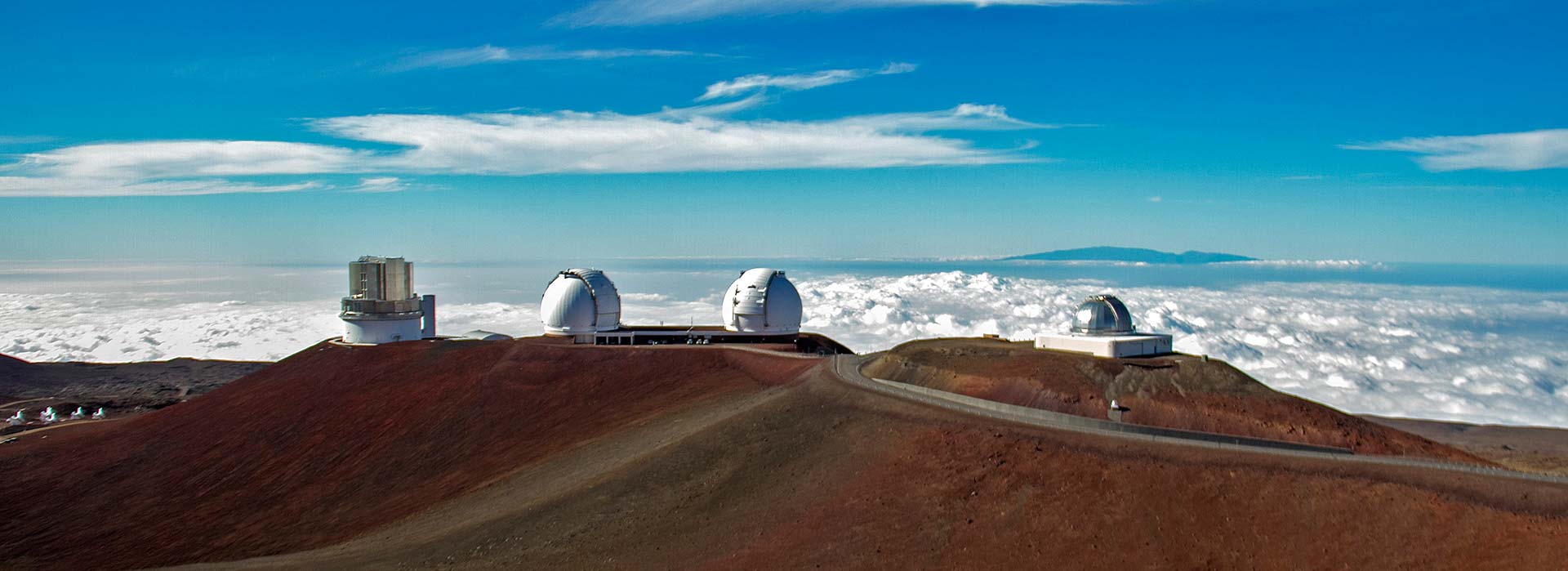The people of Hawaii should be the ones who determine the fate of Mauna Kea’s summit. It’s their mountain. It’s their state. Beyond that, allow me to offer a perspective that may have been overlooked in the heat of debates.
Hawaii is an island paradise with unique biodiversity. For astrophysicists, Hawaii is also home of the best observing site on Earth—Mauna Kea. Located near the summit of this mountain on the Big Island is an assortment of optical telescopes, including, since the early 1990s, the world’s most powerful.
At 14,000 feet above sea level, the top of Mauna Kea sits above most rain-generating clouds that tropical locations commonly foster. It’s also especially dark—isolated in the middle of the ocean, far away from city-based light pollution. Another attractive feature is the non-turbulent, laminar flow of air off the waters that surround the mountain, rendering views of cosmic objects particularly stable and sharp.
This same location has been proposed for the next generation of the world’s largest telescope. At 30-meters in diameter, this feat of engineering enjoys nearly ten times the collecting area of the previous record holder. History and experience tell us that every leap in telescope size brings forth new discoveries and refreshed understandings of the cosmos and of our relationship to it: from the origin of the universe fourteen billion years ago, to the contents and landscape of our local stellar neighborhood. These telescopes are the greatest tools of cosmic navigation there ever were.
After all regulatory and legal approvals were granted for construction, alongside documents projecting substantial financial support for the local economy, schools, and academic facilities, several groups opposing the telescope have blocked the one road to the mountaintop, citing among other causes, that native Hawaiians—descendants of ancient Polynesians—consider the summit sacred and that the presence of telescopes represents just another mark of unwelcomed European colonization. Although the groups do not represent all native Hawaiians, some high profile celebrities have even lent their name to the cause.
My only opinion here is that the people of Hawaii (however its residents choose to define this), and not anyone else, should be the ones who determine the fate of Mauna Kea’s summit. It’s their mountain. It’s their state. Beyond that, in the interest of informed discussion, allow me to offer a perspective that may have been overlooked in the heat of debates.

Knowledge of the skies and navigating Earth’s surface are two pursuits that are fundamentally conjoined. Stars have guided navigators since the dawn of civilization. And the greatest navigators in the history of the world were restless Polynesians. Via double-hulled canoes, they discovered, mapped, and settled most islands of the south and central Pacific, including Hawaii and New Zealand. We are all explorers at heart. It’s somehow writ large in our DNA. But not every culture gets to do it. Not every culture figures out how to do it.
Have you ever contemplated the size of the Pacific Ocean? At the equator, it spans one third of all Earth’s longitude. Have you seen how scattered the island nations are that dot it? Mere dozens of miles separate some of them, but for others, hundreds and even thousands of miles of open ocean separate one island from the next. Now go back in time. More than three millennia ago: Before GPS; before marine chronometers; before the industrial revolution; before sextants, before compasses, before and during the time of Muhammad, Jesus, and Buddha. Now try to do what the Polynesians did. From their encyclopedic knowledge of nature, they invoked the appearance (or absence) of coastal and marine animals, birds, shorelines, ocean currents, and most importantly, the Sun, Moon and Stars, to find their way. They were explorers. They were discoverers. They were Wayfinders.
The magnitude of this accomplishment was affirmed for me when I interviewed Nainoa Thompson for StarTalk on National Geographic TV. Nainoa is a modern Polynesian Wayfinder who sailed a 60-foot double-hulled canoe, made from original specifications, 2,400 miles between Hawaii and Tahiti.
All this leaves me to wonder what the ancient Polynesians would say about having the world’s largest instrument of navigation on an island they discovered.
Today, with Earth’s landmasses fully mapped, we look up from our planet’s surface—a kind of shoreline of its own to the cosmic ocean. With telescopes trained on the heavens, while scientists “navigate” from the back end, we nightly explore humanity’s place in the cosmos. Which leaves me to ask:
Whatever is your concept of the divine forces that created and shaped our universe, might the discoveries of modern astrophysics bring you closer to them?
I wonder in this way, not because I am an astrophysicist but because I am human.
Respectfully Submitted,


